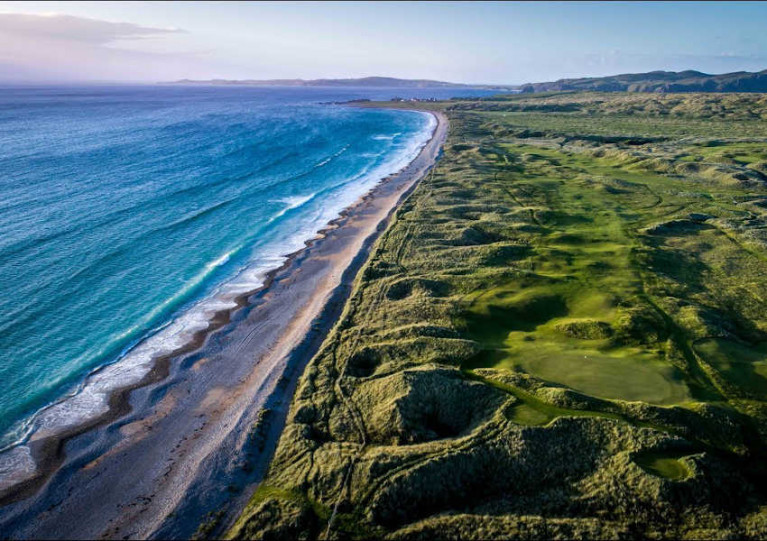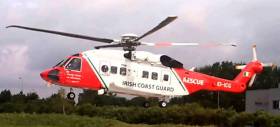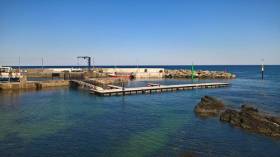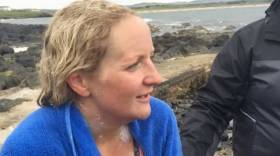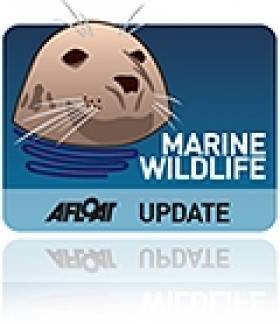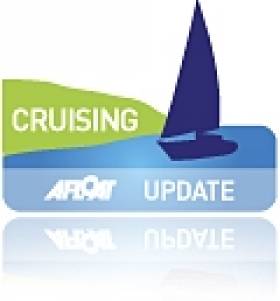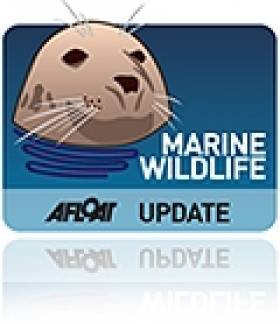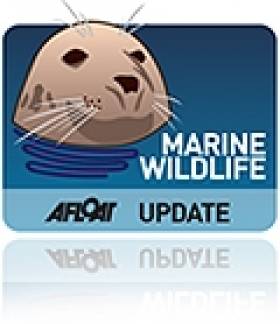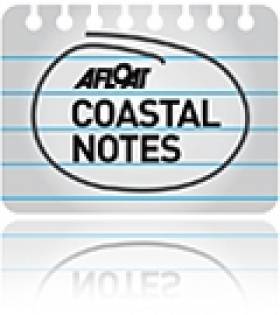Displaying items by tag: Inishowen
A golf links which hosted the the Irish Open in 2018 is one of a number of amenities on the Inishowen Peninsula that faces threat from coastal erosion.
As RTÉ News reports, local communities fear that it may only take a few more storms before the likes of the popular Ballyliffin course suffer the same fate as an adjacent 3km walkway on Pollan Strand — which was lost after up to 50 metres of beach were eroded.
A local authority report commissioned four years ago on five site of concern recommended ongoing monitoring of the situation and “no active intervention”.
There's anger in Inishowen in Donegal after a report on coastal erosion recommended no active intervention at Ballyliffin golf club, a historic church and a number of beaches. Locals say the amenities are under threat and action is needed before they are lost pic.twitter.com/vbiitbbwFb
— RTÉ News (@rtenews) July 2, 2020
But local campaigners fear that without concrete action, they could lose valuable assets of their coastal communities forever.
RTÉ News has more on the story HERE.
Man Dies After Diving Incident Off Donegal
Independent.ie reports that a man has died following what appears to be a diving-related incident off the coast of Inishowen in Donegal on Sunday afternoon (12 May).
The man in his 30s was rushed to Letterkenny by the Irish Coast Guard helicopter Rescue 118 but it was later confirmed he died in hospital.
#Marinas - Minister of State Joe McHugh will officially open the new €1.3 million Bunagee Marine Development on the Inishowen Peninsula tomorrow afternoon (Friday 9 June).
The new safe haven for coastal cruisers, including a breakwater and pontoons to accommodate 15 vessels, was developed by Donegal County Council as part of the major cross-border project Sail West.
It also forms part of a county-wide strategy to grow Donegal’s necklace of coastal tourism infrastructure and promote the county as a top marine destination in Europe, under the MalinWaters brand shared with Sligo, Northern Ireland’s maritime counties and Western Scotland.
Ahead of the marina's official opening, Donegal County Council Cathaoirleach Terence Slowey said: “We have a wonderful marine tourism product here in Donegal and the new Bunagee Marine Development is a great addition to our existing infrastructure.
“Situated close to the beautiful village of Culdaff, Bunagee is an ideal base that will give visitors the opportunity to explore the Inishowen Peninsula and the county.”
Minister McHugh will attend the official opening at Culdaff on Friday 9 June at 2.30pm.
The project was funded by the European Union’s INTERREG IVA Cross-border Programme managed by the Special EU Programmes Body. It was constructed by Deane Public Works, and Doran Consulting was awarded the contract as the consultant engineers.
#SeaSwim - Charity worker Heather Clatworthy has become only the second swimmer to cross the Atlantic between the Inishowen Peninsula and Portstewart on the North Coast – and the first in nearly 90 years, according to the Irish Examiner.
The 34-year-old, who lives in Warwick with her family but grew up in Portstewart, crossed the expanse of open sea on Wednesday 27 July in around half the time expected, reaching the shore a little over four hours after setting out from Stroove beach in Moville.
“Two hours in I just didn’t think I was going to do it,” she said after powering through illness and choppy waters to complete her amazing feat, last achieved by famous English Channel swimmer Mercedes Gleitze in 1929.
The Belfast Telegraph has video of Clatworthy as she set out on her remarkable challenge:
In other sea swimming news, Galway long distance swimmer Alice Flood celebrated her swim across the English Channel earlier this week.
As the Galway Independent reports, the Bushy Park native made the gruelling crossing in just under 14 hours and joins an elite group of swimmers who've completed the England-to-France challenge.
Kayakers Land Tope Shark For A Snap Off Inishowen
#MarineWildlife - A group of sea anglers off Donegal's Inishowen Peninsula got more than most would bargain for last week when they landed a shark – with video to prove it.
But far from fearful at the prospect, Graham Smith and friends told the Irish Examiner that they actively seek out such fishy predators as the tope shark, a few of which they caught while out kayaking in recent days.
"They normally range from 20lb to 45lb," he said of the small fighters, "but there are bigger ones around later in the year."
It's all in good sport, however, as the vulnerable species – also known as the school shark or snapper shark – were returned to the water "to terrorise the small fish of Inishowen."
Sail Ireland's North–West Coast to Derry
#visitderry – Sail Ireland's North West and discover Donegal's rugged coastline and the River Foyle to the walled city of Derry~Londonderry, named by 'Lonely Planet' as one of the Top 10 Cities to visit in the World!
Follow the seaways from Scotland, England and Wales and, with good planning, the tidal streams will make light work of the passage across the North Channel and westward to the Foyle. Lying in wait is the fantastic coastline of Inishowen, with vistas of towering stacks, cliffs, beaches and a repertoire of heritage!
Sailing along the top of Ireland, take advantage of the sheltered delights of Lough Foyle and, at its mouth, the quaint village of Greencastle, the second-biggest fishing port in Donegal.
The harbour accommodates a wide range of yachts and a new permanent pontoon is planned for 2015. Trawlers from here ply as far as Rockall and the local mussel and oyster harvests supply restaurants across the region. Greencastle itself is home to a superb seafood eatery and its traditional Irish pubs are perfect places to relax and enjoy the 'craic' in this friendly village.
Visitors can also avail of a stunning shoreside walk and check out the Inishowen Maritime Museum – housed in the Coastguard buildings overlooking the harbour. Lough Foyle is shallow but a well-marked shipping channel runs all the way from Greencastle to Derry~ Londonderry's Foyle Marina, where two pontoons can berth up to 120 boats.
Named by acclaimed travel publication 'Lonely Planet' as a Top 10 City in the World, Derry is renowned as one of the finest walled cities in Europe and the defences celebrated their 400th anniversary in 2013 during Derry's iconic year as the inaugural UK City of Culture.
Take a trip back in time strolling along the famous 17th Century walls, and view one of the largest collections of original cannon in Europe, dating back to the days of the Siege. Or why not call in to one of the many museums and immerse yourself in the city's quirky history?
A hard day shopping and sightseeing is guaranteed to work up an appetite and whether you're looking for contemporary cuisine, a fine dining experience or somewhere to re-fuel the kids, you'll find it all here.
So where to next? Derry is home to a thriving music scene and the city is packed with lively bars, stylish clubs and traditional pubs.
Join the locals in an Irish trad 'seisiun' or catch a gig at one of Derry's cutting-edge music venues. Or why not check out one of the city's many events? Visit Derry recommends the City of Derry Jazz from April 30 to May 1 (cityofderryjazzfestival.com), and Flavours of the Foyle Seafood Festival (25-26 July).
Just minutes from Derry lies the stunning landscape of Donegal. Take a drive around its rugged coastline and marvel at endless beaches, medieval castles and natural wildlife. Challenge yourself and try your hand at angling, cycling, hiking or surfing. And let's not forget some of Ireland's finest links courses!
To the east of the city you will find the stunning natural hinterland of the North Antrim Coast. Explore the Giant's Causeway, a UNESCO World Heritage Site, and take an 'Indiana Jones' style walk across the famous Carrick-A-Rede rope bridge, which is suspended over 100ft between two rugged cliffs – an experience that is definitely not for the faint hearted!
To finish your day, call into Bushmills Distillery for a drop of Northern Ireland's most famous exports, Bushmills whiskey.
On the doorstep of such stunning scenery, Derry~ Londonderry has to be one of Europe's greatest city experiences. With berthing fees from just £15 per night there really is no better time to visit. Make your next sail the North West of Ireland – it'll be 'LegenDerry'!
'The North West is among the most beautiful cruising grounds in the world'
During the Clipper Round the World Yacht Race, the Derry~Londonderry stop–over was the best; not just from my slightly biased point of view, but also one shared by most of the crew on the other boats. The reception after the scenic trip up the Foyle into such a vibrant and friendly city is what made it so special. The facilities in the new Foyle Marina and also nearby in Greencastle, Co Donegal are fantastic. It's great to see the development going into the port as it and the surrounding areas in the North West of Ireland are among the most beautiful cruising grounds in the world... especially when the sun shines!
Derry~Londonderry skipper Sean McCarter
DATE FOR YOUR DIARY!
The Clipper Round the World Yacht Race and Maritime Festival returns to the city – in Summer 2016!
Now firmly established as the No 1 stop–over destination on the Clipper Race circuit, Derry will host a week-long Maritime Festival to celebrate the arrival of this iconic race. Foyle Marina will transform into a summer promenade, complete with race village, marine marquees, award winning continental market and host of sea-faring activities on and off shore. At the centre of the festival will be the welcome of the 12-strong fleet of Clipper yachts, including Derry~Londonderry-Doire yacht. In 2014, the city welcomed more than 120 visiting yachts during the festival – make sure you are part of the celebrations next year!
Book your berth now!
Contact FOYLE Port
+44 (0) 28 7186 0555
Inishowen's Whales & Dolphins Focus Of Family Day This Saturday
#MarineWildlife - Lough Foyle area environmental group Celebrate Water is organising a family afternoon to highlight the wealth of marine wildlife off the Inishowen Peninsula this Saturday 6 September.
As the Derry Journal reports, the day will see Greencastle's coastguard station in Co Donegal open to the public with an special exhibition on the area's whales and dolphins, followed by a talk by local wildlife expert Emmett Johnston on how to spot cetacean species and identify them for the Irish Whale and Dolphin Group.
These events and more on the day follow Celebrate Water's live strandings training course last month, organised in the way of some controversy over the issue of what to do in the event of mass strandings of cetaceans on Irish shores.
The Derry Journal has more on the story HERE.
Fisherman Dies Off Donegal Coast
#Inishowen - The Irish Times reports that a fisherman has died after his fishing vessel is thought to have sunk off Inishowen Head in Co Donegal this morning.
The alarm was raised by a local fisherman who spotted debris in the water, and the body of the mid-50s man was recovered by another boat some minutes later.
A subsequent coastguard search established that the man had been fishing alone in his 20ft vessel.
'Unusual' Dolphin, Whale Strandings In Northwest
#MarineWildlife - Seven dolphins and two beaked whales have stranded on beaches in the northwest in events described as "unusual" by the Irish Whale and Dolphin Group (IWDG).
On the Mullet Peninsula, a group of seven common dolphins - comprising five adults and two juveniles - live stranded at Tarmon Beach on Sunday 12 May.
Though initial attempts to refloat them were successful, one of the juveniles was later found dead and the other was euthanised due to poor health.
Meanwhile in Donegal, the fresh carcass of a female True's or Sowerby's beaked whale was found on Sunday evening on Five Fingers Stand at Inishowen - some days after a reported live stranding of a Sowerby's beaked whale on the Welsh coast.
The Inishowen stranding was followed yesterday 14 May by the discovery of a dead beaked whale calf at Trawbreaga Bay, in what is believed to be a connected stranding.
Samples of the adult female were taken in order to confirm the species, either of which would mark a rare cetacean record for Ireland - the first since 2009.
'Wild Atlantic Way' Coastal Tourism Route Launched
#CoastalNotes - Minister of State for Tourism & Sport Michael Ring today (23 April) unveiled the final route for the Wild Atlantic Way, a new coastal tourism route running from Donegal to Cork.
The minister joined Fáilte Ireland to present the final route to 300 top overseas tour operators attending Meitheal 2013, Ireland’s largest tourism trade fair.
The Wild Atlantic Way will be Ireland’s first long-distance driving route, stretching from the Inishowen Peninsula in Donegal to Kinsale in Co Cork, and offering future visitors an opportunity to discover the west coast.
The 2,500km final route was unveiled following a comprehensive public consultation process and includes 156 strategically placed discovery points for tourists along the way.
While the route unveiled today comprises the main spine of the Wild Atlantic Way, a series of looped itineraries off the spine are also planned to further develop the experience for visitors.
Speaking today, Minister Ring said: “The Wild Atlantic Way is a very exciting project and I’m certain it will be a major tourism attraction. But to make it happen we all need to get on board.
"There has been a great response so far and I’m encouraging tourism operators, local authorities, business people and residents to stay involved to get this over the finishing line."
Overseas tour operators were given an advance ‘sneak-peek’ of the route last night at a Fáilte Ireland welcome event in the Convention Centre Dublin when they were treated to the premiere of the video trailer above to show them just what their clients can expect along the route from next year on.
Paddy Mathews, manager of destination development with Fáilte Ireland, believes the project will be a great addition to what Ireland has to offer visitors.
“Developing a route like this is an important part of ensuring Ireland is able to provide visitors with an unforgettable experience," he said. "It will open up a huge number of towns and attractions to them and showcase the scenery and unique culture of the West Coast of Ireland providing easy access to a range of experiences along the route.
“Now that the route has been finalised we will be focusing our efforts on turning all this preparatory work into a reality – an international driving route to rival the best in the world.”
Fáilte Ireland has been working with all the local authorities along the West Coast as well as the leader companies, Údaras na Gaeltachta and the Western Development Commission.
Full details of the Wild Atlantic Way are available on the Fáilte Ireland website HERE.


























